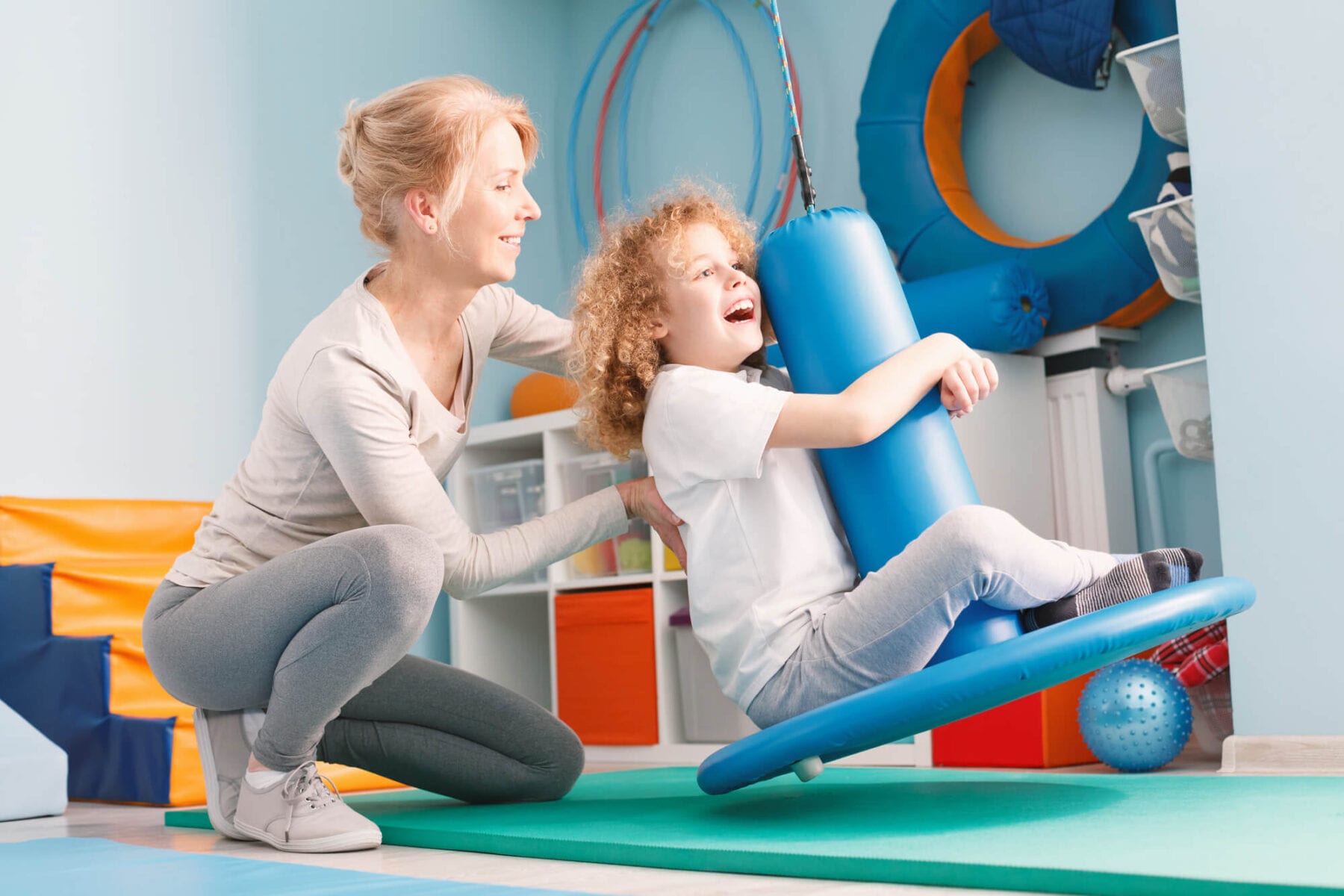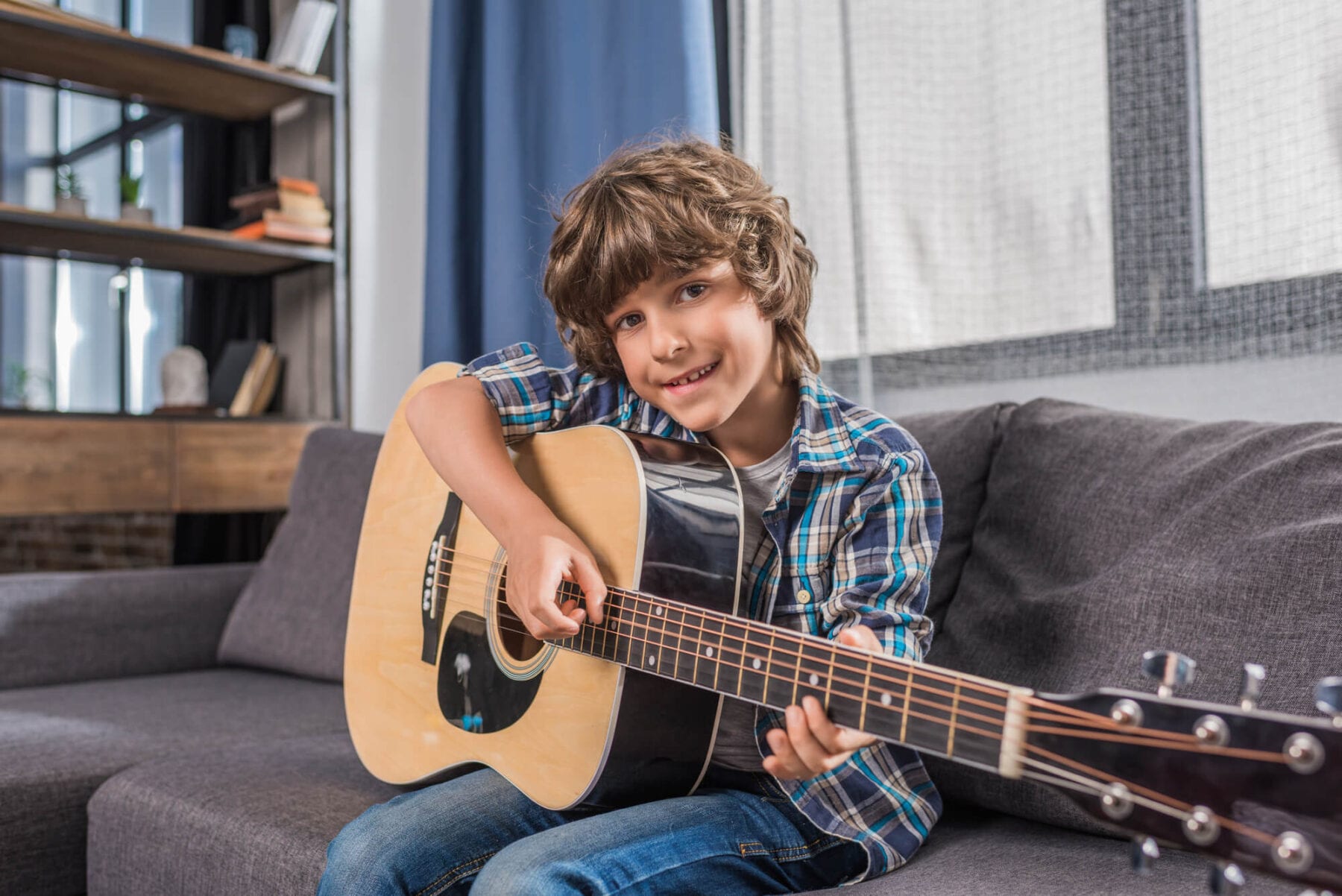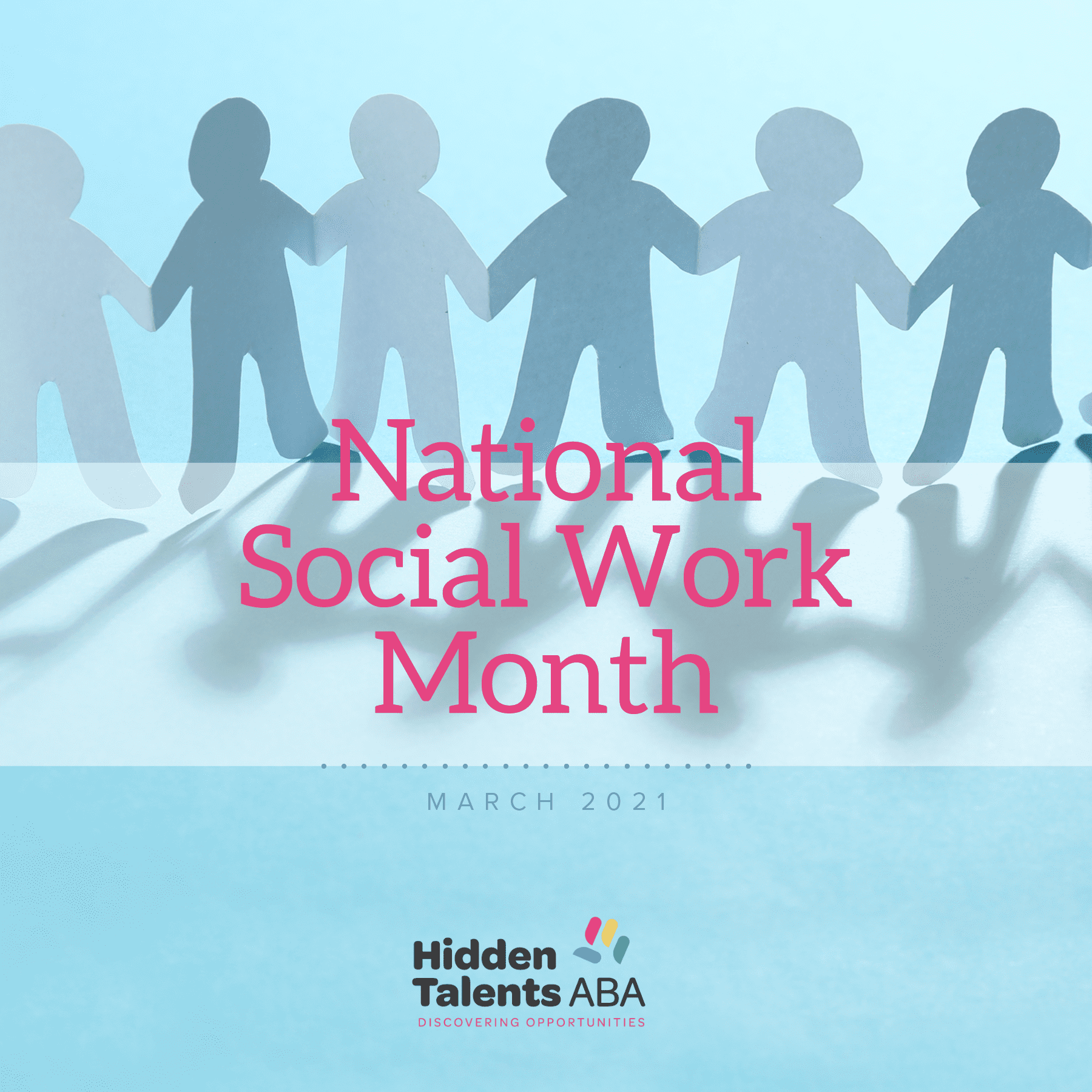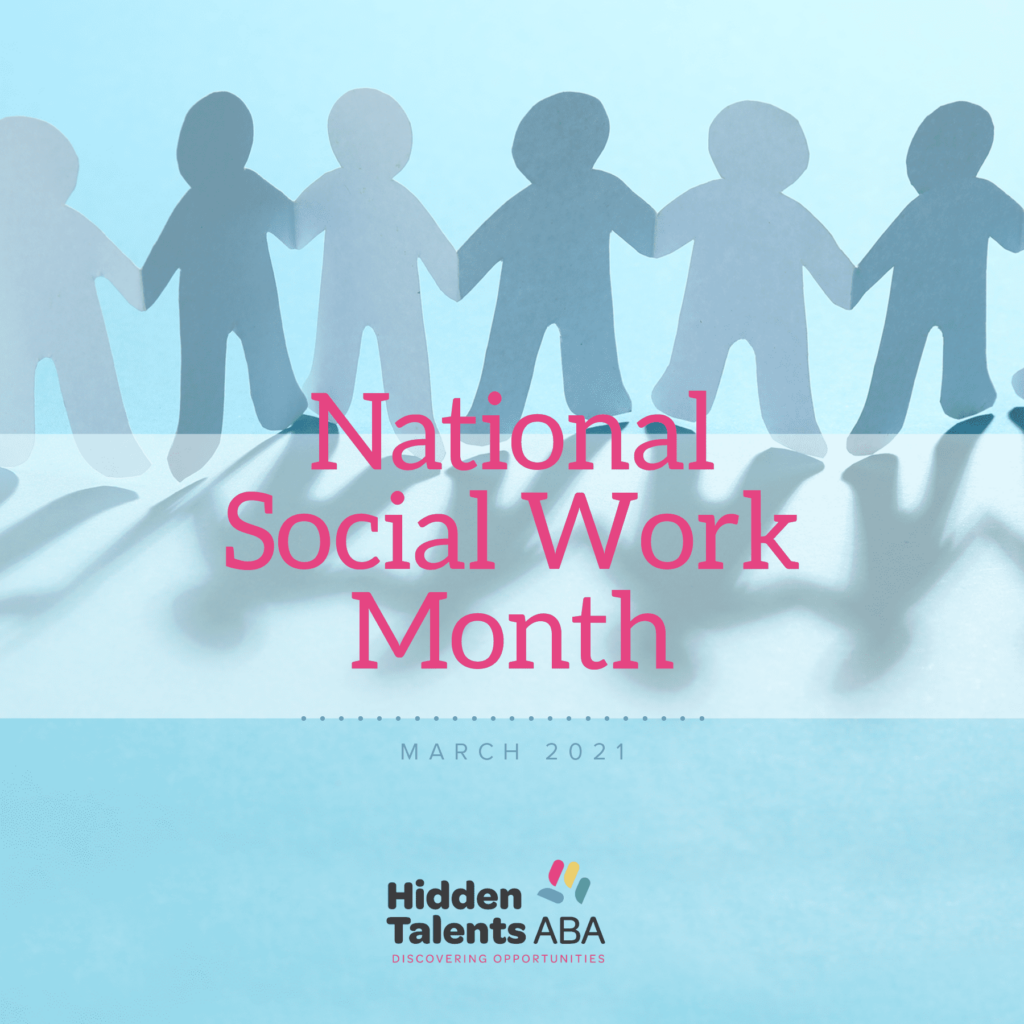Hyperbaric oxygen therapy consists of breathing an increased level of oxygen in a pressurized air chamber. This type of therapy may be effective in alleviating some of the symptoms of autism and can potentially improve communication, cognitive abilities, and behavior issues in autistic children.
Read on to find out more about hyperbaric oxygen therapy and how it can benefit your child with autism spectrum disorder.

What Is Hyperbaric Oxygen Therapy?
Hyperbaric oxygen therapy (HBOT) is a non-invasive medical treatment that uses increased amounts of oxygen to enhance the body’s natural healing process.
Patients are placed in pressurized hyperbaric oxygen chambers where they inhale 24%-100% times the normal level of oxygen. The ambient pressure of HBOT chambers is up to three times higher than the air we breathe.
This type of environment helps raise oxygen solubility in the blood and accelerates oxygen-dependent body functions, from heartbeat to thinking and moving. HBOT allows oxygen molecules to reach 400% deeper into tissues and organs in comparison with the typical blood supply.
What conditions are treated with HBOT?
Hyperbaric chambers with pressurized oxygen were initially used to treat deep-sea divers who suffered from decompression sickness. Since 2004, HBOT has been used to alleviate symptoms in patients diagnosed with autism, in addition to treating a wide variety of medical conditions, such as:
- Arterial gas embolism
- Severe carbon monoxide poisoning
- Smoke inhalation
- Wound healing
- Treatment of gangrene
- Cerebral palsy
- Multiple sclerosis
- Neuropathy
- Traumatic brain injuries
- Traumatic inadequate blood flow
- Bone infections
- Delayed radiation injury
- Athletic injuries
- Alzheimer’s and other mental conditions
- Strokes.
How does an HBOT therapy session work?
During HBOT sessions, your child will sit or lie in a hyperbaric chamber and breathe oxygen while the pressure inside the chamber is slowly increased.
Each clinic has a slightly different way to deliver HBOT therapy, and you should talk to several providers before you make a selection. Ask about any details, such as whether you can enter the chamber with your child, whether your child can watch a movie, or play games on an iPad during treatment, and whether the clinic has experience in working with autistic children.
Types of hyperbaric oxygen chambers
Monoplace hyperbaric chambers are long, plastic tubes built for one person. Multiplace chambers are larger and can fit two or more people at the same time. The treatment is largely the same, the only difference being that in a multiplace chamber, patients breathe pure oxygen through a mask or a hood.
HBOT clinics use hard medical-grade hyperbaric oxygen chambers with 100% oxygen, while mild (mHBOT) chambers that can be used at home have ambient air with 21% oxygen and lower pressure. Your treating physician will make recommendations as to which version is best for your child. A prescription is required for any type of HBOT treatment.
How can HBOT help in the treatment of ASD?
Hyperbaric oxygen therapy may play an important role in the treatment of children with autism spectrum disorder. It can have the following benefits:
Reduce neuroinflammation
Neuroinflammation, an inflammatory response within the brain or spinal cord, is one of the major underlying causes of autism spectrum disorder.
One of the direct consequences of neuroinflammation is cerebral hypoperfusion, the inadequate blood flow to the brain, which can result in limited cognitive abilities, problems with focus and attention, communication, and social interactions in children with autism.
Several studies have confirmed that increasing oxygen content in the blood through HBOT may significantly reduce cerebral inflammation.

Improve behavior
Research indicates that oxygen therapy may lead to improved cognition and movement in children with autism, including better skill acquisition, reduced problem behavior, and enhanced spontaneous communication.
Improve mitochondrial dysfunction
Many children with autism spectrum disorder suffer from mitochondrial weakness, which results in low energy that slows down thinking and other body functions. Studies have found that oxygen therapy can enhance mitochondrial function, hence improving symptoms of autism such as fine motor skills and balance.
Reduce oxidative stress
Oxidative stress, an imbalance between free radicals and antioxidants in the human body, may lead to inflammation that damages brain tissue and drastically reduces metabolism, causing many clinical symptoms of autism. Research suggests that HBOT may improve the production of antioxidant enzymes that protect the brain cells from oxidative stress, leading to better social interactions, in addition to memory and mood improvements.
Other benefits of HBOT
Hyperbaric oxygen therapy provides a host of benefits in many conditions that occur simultaneously with autism spectrum disorder. HBOT treatments can:
- Reduce gut inflammation and bloating
- Heal intestinal lining to improve leaky gut
- Impair anaerobic gut microbe colonies in the body
- Enhance the production of glutathione
- Increase detoxification rate of heavy metals
- Decrease seizure activity
- Strengthen the immune system.
Does Hyperbaric Oxygen Therapy Work for Autism?
Many clinical trials have attempted to establish the usefulness of HBOT in treating individuals with autism spectrum disorder. However, the results of these studies have been mixed and medical specialists are still considering the effectiveness of HBOT treatment for autism.
On the one hand, several studies have shown promising results of using HBOT for reducing inflammations in the brain and gastrointestinal system that are often associated with autism. Both parents and doctors of autistic children have reported benefits of HBOT in autism therapies including:
- Improved sleep
- Enhanced focus and attention
- Fewer sensory issues
- Improved bowel function
- Improved cognition
- Better communication skills
- Children becoming more affectionate and calmer
- Stronger connection to family.
On the other hand, many researchers still believe that there is little empirical evidence of the effectiveness of HBOT therapy on autism. They point to several limitations when it comes to establishing a clear relationship between the use of HBOT and significant improvement in autistic symptoms:
- There is a lack of rigorous experimental control and good scientific practice.
- Studies are often not being duplicated across the autistic population and therefore not considered to be accurate.
- Some studies examining this type of treatment have described improvements that could have been partly due to a placebo effect.
- In some cases, participants’ conditions might have improved over time due to concurrent treatments rather than the effects of HBOT.
The Food and Drug Administration (FDA) has approved HBOT for the treatment of several conditions. However, the therapy has not been cleared as safe and approved for treating autism because its effectiveness has not been clinically proven.
Is Hyperbaric Oxygen Therapy Safe for Autistic Children?
Hyperbaric treatment for autistic children is generally regarded as safe and well-tolerated at pressures up to 1.5 atm and 100% oxygen for two hours per day. However, like any other treatment, HBOT has been shown to have several undesirable side effects.
Sinus damage
Sinus damage can occur during oxygen therapy in patients with upper respiratory infections. Significant changes in pressure may result in compression in the sinus cavities, inflammation of sinuses’ mucosal tissues, congestion, and edema. Your child may also feel facial pain that decreases as the air volume in the chamber expands. The use of decongestant nasal spray before the therapy significantly reduces this undesirable side effect.
Fluid buildup in the middle ear
One of the common side effects of oxygen therapy is feeling the pressure, ear pain, or discomfort during the treatment. In some cases, the pressure can cause swelling in the middle ear and rupture of the inner membrane leading to hearing loss. Children with autism who have recently undergone ear surgery should not receive HBOT unless instructed otherwise by their doctor.
Lung damage
During and after the HBOT therapy, patients suffering from emphysema and asthma may sustain lung tissue damage due to pressure change. This may result in air leaking from the lungs into the chest and a collapsed lung. Anyone with lung disease should not undergo this type of therapy.
Oxygen poisoning
In rare cases, elevated oxygen concentrations during sessions of hyperbaric oxygen therapy can lead to chest pain, breathing difficulties, and potentially, the risk of respiratory failure. To prevent tissues in the body from taking in too much oxygen, which may lead to oxygen poisoning, your child may have to take short breaks during the therapy and breathe normal air.
Reversible myopia
The use of HBOT can briefly change the state of the lens in the eye which worsens myopia. However, this and other vision issues are reversible within six months after the cessation of therapy. Your child may also briefly experience symptoms such as eyelid twitching, blurry vision, and visual-field disturbances.
Claustrophobia
Claustrophobia is a common concern when it comes to HBOT due to the enclosed nature of the hyperbaric chamber. In some cases, a larger multiplace chamber may be a better option. If claustrophobic symptoms become severe, your child’s doctor can prescribe pre-treatment sedation.
The best way to avoid the side effects of hyperbaric oxygen therapy is to make sure treatment is done by certified and trained medical staff. In the US, there are not many healthcare providers who are board-certified in the field. That’s why you should always confirm that the healthcare provider offering your therapy has special training from the Undersea and Hyperbaric Medical Society (UHMS).

How Long Does Hyperbaric Oxygen Therapy Sessions Last?
An HBOT session for autistic children typically lasts for 90 minutes. In some cases, the treatment may take up to 2 hours.
How Many HBOT Sessions Are Needed for Autistic Children?
There are no standard therapeutic guidelines as to the number of sessions needed for the HBOT autism treatment to work. The number and frequency of sessions required will vary from child to child. You may want to start with a series of 10 sessions, after which your doctor can evaluate the progress and advise on whether your child should continue with the treatment. In most cases, the therapy will require between 20 and 40 treatments.
Is Hyperbaric Oxygen Therapy Covered by Insurance?
Hyperbaric oxygen therapy is an expensive treatment. One therapy session can cost up to $250, which amounts to $10,000 for 40 sessions.
HBOT can be covered by Medicare and commercial insurances, although most insurances will require prior authorization to cover this type of treatment. Several commercial insurance companies, including BlueCross BlueShield, United Healthcare, Cigna, and Humana, will approve HBOT for off-label conditions such as autism if the treatment is medically necessary. However, companies reserve the right to deny HBOT coverage regardless of the medical condition. The amount you need to pay out-of-pocket will depend on your insurance plan.
HBOT is usually not covered by private health insurance or Medicaid as it is considered being an experimental treatment. HBOT using soft/mild chambers are not reimbursed by insurance companies.
Other Therapy Options for Autistic Children
Hyperbaric oxygen therapy is an adjunctive treatment for autism and is usually combined with another type of therapy. As part of multidisciplinary treatment for your child, you may also want to consider speech therapy, occupational therapy, restrictive diet, applied behavioral analysis (ABA) therapy, and verbal behavior analysis (VBA) therapy.










